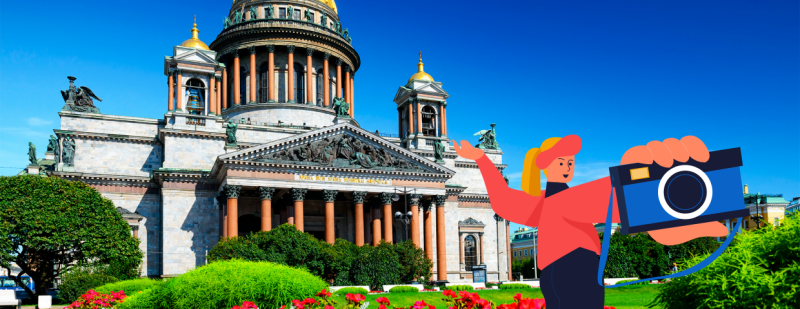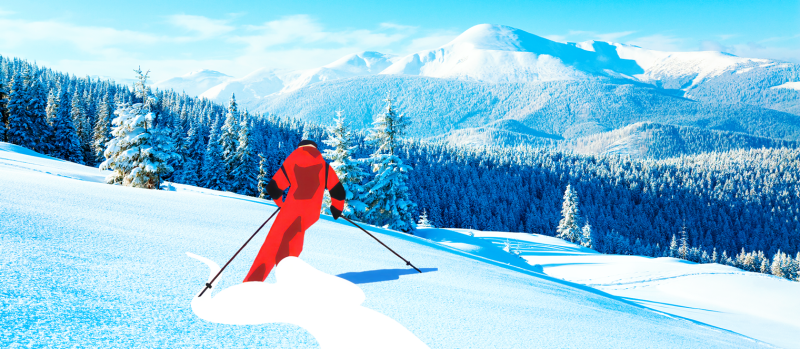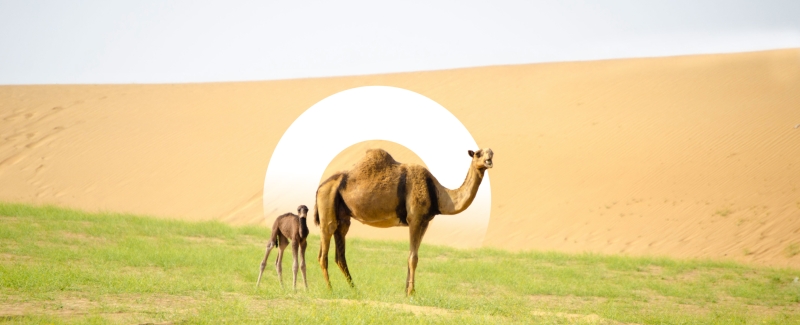
Turkmenistan has something to surprise: dinosaur trails and ancient fortresses have been preserved here, you can see the “Gates of Hell” and fire canyons, visit caravanserais on the Great Silk Road and explore amazing oasis cities. We tell you what you can’t miss in the mysterious Central Asian state.
Contents
- What to see in Ashgabat
- Dinosaur Plateau
- Ancient Merv
- Gas crater “Gates of Hell”
- Karakum Desert
- The Parthian fortresses of Nisa
- Yangi Kala Canyon
- Dayakhatyn Caravanserai
- Dehistan
- Kunya-Urgench
Main
- Currency: Turkmen manat, the exchange rate at the time of writing is 25 rubles
- Time difference from Moscow: +2 hours.
- Visa: needed. If there is a visa invitation, for example, from business partners, it can be issued at the Embassy of Turkmenistan in Moscow. If you plan a tourist trip, you must apply to travel agencies of Turkmenistan for an invitation for a visa, their contacts are available on the embassy’s website. The cost of the visa itself is $ 165 plus agency services.
- How to get there: S7 has direct flights from Moscow to Ashgabat, the cost of tickets in July 2024 starts from 34,500 rubles round trip.
- When is the best time to go: from March to May or from September to November.
- Guides: keep in mind that it is better to take a local guide or go on an excursion to explore most ancient monuments: cities and fortresses cannot boast of an abundance of information signs, especially in Russian.
The White city of Ashgabat: from carpets to palaces
In the capital of Turkmenistan, mosques and national symbols are side by side with monuments to Pushkin and Lenin: an unforgettable cocktail of Asian flavor, Muslim customs and the Soviet past. Ashgabat is often called the “white city” — after the devastating earthquake of 1948, the facades of many buildings were lined with stone of this color.
What to see in the capital
Monuments. In the motley mess of Ashgabat, after the monument to the local horse breed, you are not surprised even at the gilded 15-meter monument to the Turkmen Alabai, which is adjacent — suddenly — to the Orthodox church of Alexander Nevsky. The cherry on the Ashgabat cake is a “carpet” monument to Lenin: Ilyich towers over a pedestal decorated with tiles with national patterns, as if he won the “King of the Mountain” in Turkmen. Colorful, powerful, impressive.
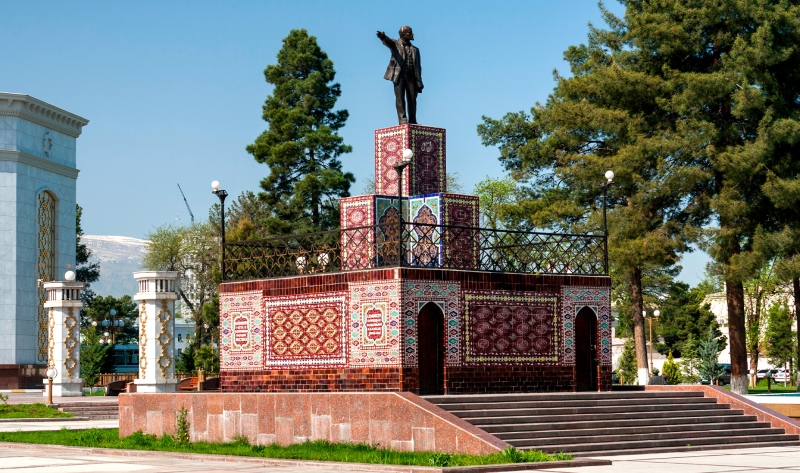
The cherry on the Ashgabat cake is a “carpet” monument to Lenin. Photo: Vladimir Artev/Shutterstock.com
Museums. We recommend the Turkmen Carpet Museum: get to know the local culture and look at the world’s largest handmade carpet.
Ak Bugday, or the museum of white wheat, is curious, where grains of 5 thousand years old are exhibited. The museum building looks like a huge sheaf with a giant ear in the middle.
Architecture. Do not pass by mosques: the Ertogrulgaz, built in the Turkish style, will remind Istanbul and Hagia Sophia with the Blue Mosque. Architecture lovers are advised to explore the Oguzkhan palace complex: the presidential residence resembles the oriental palace from the cartoon “Aladdin”, but alas, it will not be possible to get inside.
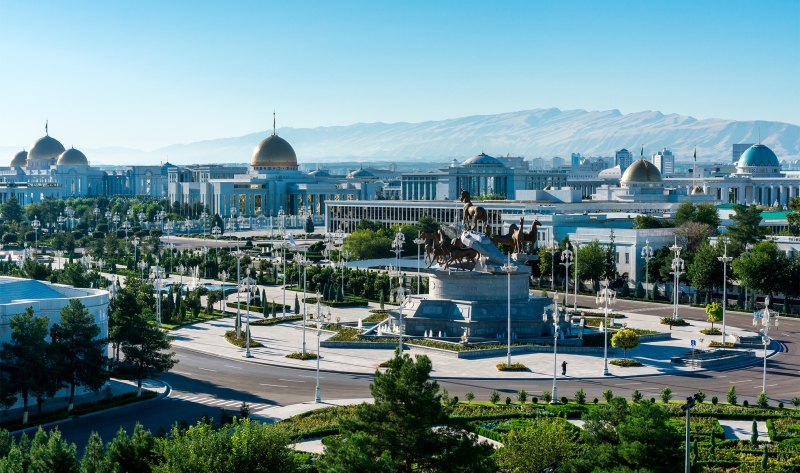
Architecture lovers are advised to explore the Oguzkhan palace complex. Photo: JoostP/Shutterstock.com
Where to stay
- The Archabil Hotel is a luxurious palace with a panoramic restaurant.
- Divan — in the center, but with its own pleasant park, there is a spa complex and a restaurant with Italian cuisine.
- Sport Hotel Ashgabat — next to the Olympic town, there is a fitness center, gym and massage room.
- Hyldyz Hotel — futuristic design, mesmerizing views and excellent service all rolled into one.
- Oguzkent is an option for business trips closer to the center and with unchanged gold in the interiors.
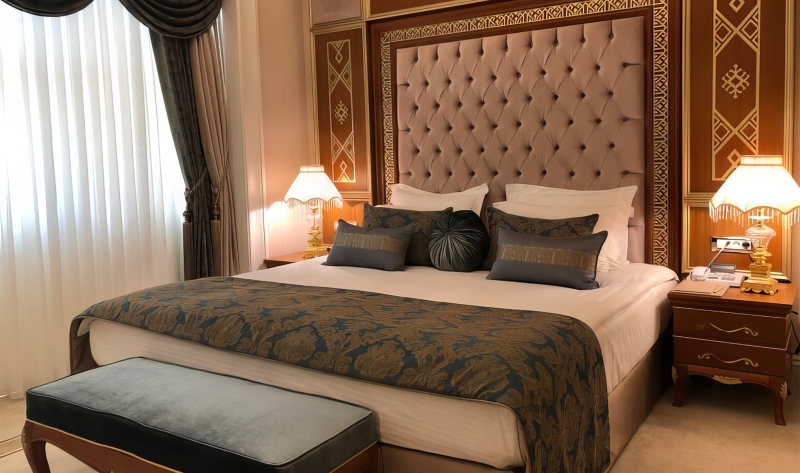
The Archabil Hotel.
Dinosaur Plateau: in the footsteps of ancient lizards
- Where: the vicinity of the village of Khojapil.
- Point on the map
Real living dinosaurs walked here millions of years ago. Imagine a plateau the size of 3-4 football fields, traversed by megalosaurs. There are so many perfectly preserved traces of prehistoric inhabitants nowhere else on the planet: there are about three thousand of them here.
Traces of powerful paws measuring 70 by 65 cm (compare with their own height) form thirty-one trails. Yes, the dinosaurs didn’t like to bother themselves either and followed each other around with their tails, just like the soft and fluffy cats at home.
They have been preserved (alas, only the footprints, not the dinosaurs themselves) due to the fact that in ancient times there was a swamp here. Gradually, the marshes dried up and petrified, and the limestone slab lying beneath them rose and tilted. The late layers of earth and soft rocks were washed away by water and exposed by the wind, and a miracle appeared to the world.
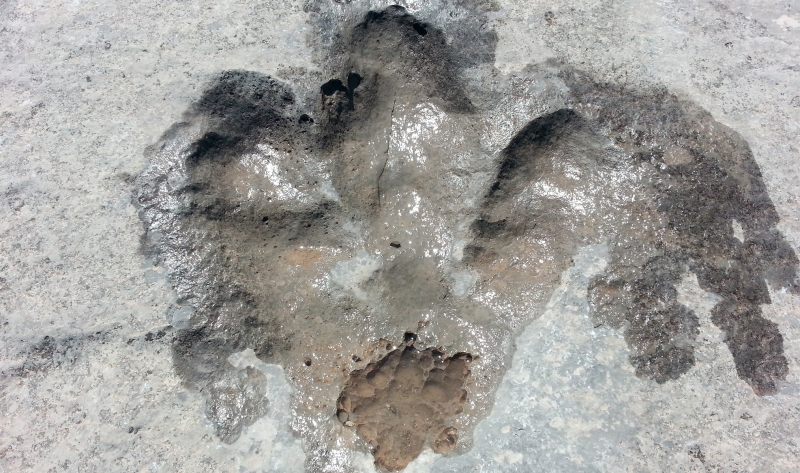
Traces of powerful paws measuring 70 by 65 cm (compare with their own height) form thirty-one trails. Photo: G.H_311/Shutterstock.com
Places for lovers of ancient history
You can find traces of the Ottoman Empire in Ankara — catch our detailed city guide. And ancient temples have been preserved in Armenia — just like from the cover of a history textbook.
Ancient Merv: “the city on which the universe rests”
- Where: Mary’s neighborhood.
- Point on the map
The oldest Central Asian city is an oasis on the Great Silk Road, which is already five thousand years old. Merv was the center of Arab scholarship and the capital of the Seljukid state, and competed with Baghdad and Constantinople in terms of the scale of construction. In ancient times, pathos epithets were not spared for him: he was both the “mother of the cities of Khorasan” and no less than “the city on which the universe rests.” The heyday period ended at the beginning of the XIII century with the invasion of the Mongol hordes.
It is simply amazing how many events, peoples and states that have sunk into oblivion have contained the Merv oasis, where a historical park has been created today. Among the iconic objects are the Bolshaya Kyz—Kala fortress, whose ribbed walls helped to repel catapult attacks, Sultan mausoleums, tombs and mosques, ruins of monasteries and walls. Artifacts from the excavations can be seen in the Museum of Local Lore in Mary.
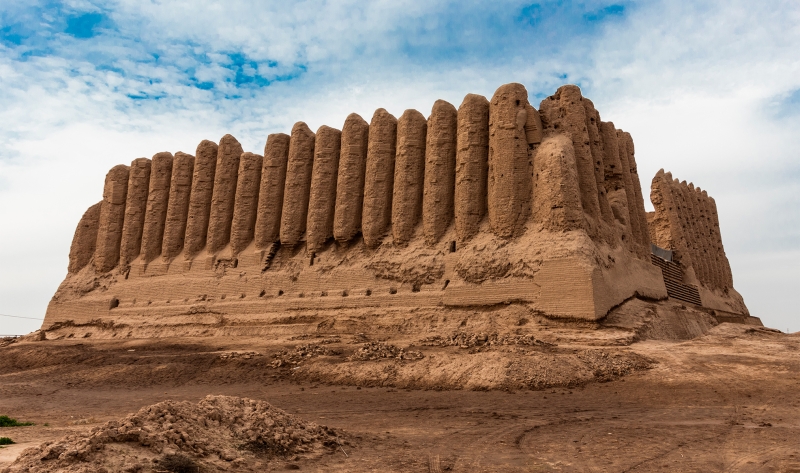
Among the iconic objects is the Bolshaya Kyz—Kala fortress, whose ribbed walls helped to repel catapult attacks. Photo: Eziz Charyyev/Shutterstock.com
Gas crater “Gates of Hell”: burning desert
- Where: the surroundings of Darvaz.
- Point on the map
If Choi had been here, perhaps we would now be singing something like “Mom, we are all deep in hell, and the devils are frying our sides…”. The hellfire that broke through to the surface, the demo of the afterlife, “the Gates of Hell”, “The Radiance of the Karakums” — a gas crater burning for more than half a century is difficult to describe without metaphors.
The sight is really impressive, especially at night. Imagine a huge pit in the desert, in which a fire has been burning for decades. The flames sometimes rise up to a dozen and a half meters.
This crater is man—made. In 1971, Soviet geologists, while conducting gas exploration, decided to set fire to the gas after the collapse, hoping that the flame would go out in a few days. It is still burning.
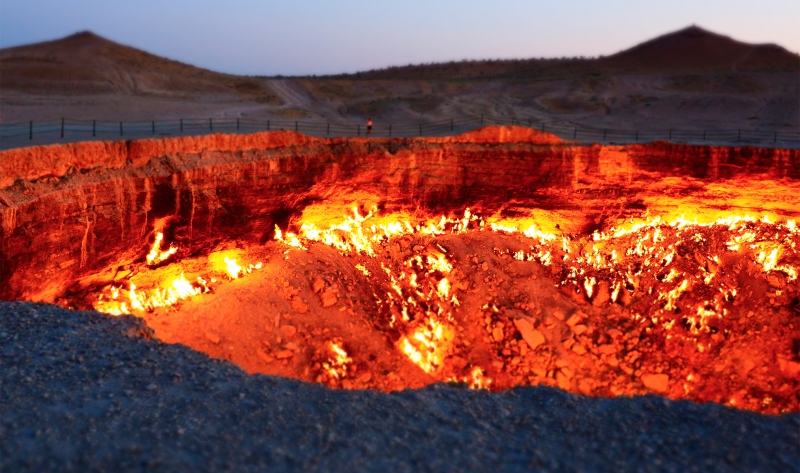
Imagine a huge pit in the desert, in which a fire has been burning for decades. Photo: Freda Bouskoutas/Shutterstock.com
Karakum Desert: candy from the heart of the Silk Road
- Where: almost everywhere.
The Great Desert, one of the hottest in the world, occupies almost three quarters of the territory of Turkmenistan. This is the kingdom of sand and dry thorns, heat during the day and cold at night, dunes to the horizon and takyr — a pattern of cracks in the parched soil.
The Great Silk Road passed through here: for centuries camel caravans crossed this area, delivering Chinese silk, Indian spices and other goods. It is difficult to imagine the hardships of such a path: it is not for nothing that the name of Karakum translates as “black sands”. The air temperature here reaches +50 ° C in summer, and the sand heats up to +80 ° C. Staying in such conditions is convenient to combine with an inspection of the “Gates of Hell”.
By the way, in honor of the Turkmen desert in the Soviet Union, the Kara-Kum chocolates were named, the ones with a camel on a wrapper.
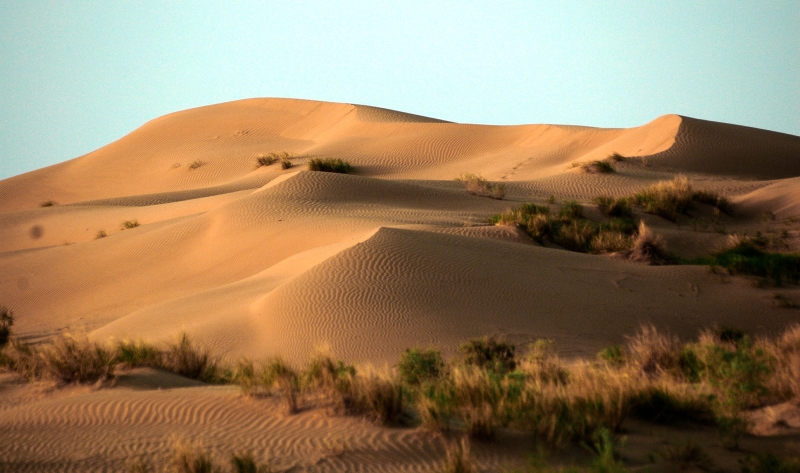
This is the kingdom of sand and dry thorns, heat during the day and cold at night, dunes to the horizon and takyr. Photo: Azat80/Shutterstock.com
If you want to go to the desert, but closer
There are sands, dunes and dunes in Russia as well — we have collected the available options in this hot selection.
Parthian fortresses of Nisa: the ancient past
- Where: the surroundings of Ashgabat.
- Point on the map
Nisa was the richest city of the Parthian Empire in the II–III centuries AD. The fortress of Old Nisa with powerful walls and numerous towers served as the royal residence. It was destroyed in 226 AD, but, as history shows, it is impossible to erase the memory. It is kept in the ruins of the pillared hall, sanctuaries and fortifications, in clay tablets, fabrics, horn-shaped vessels, sculptures made of marble and ivory found at the settlement.
The fortress is included in the UNESCO World Heritage List. Archaeological excavations provide an opportunity to imagine what everyday life was like in the ancient city. Of course, some of the walls were restored, that is, they were built anew, but nevertheless here you can feel the breath of centuries and touch the thousand-year-old stones.
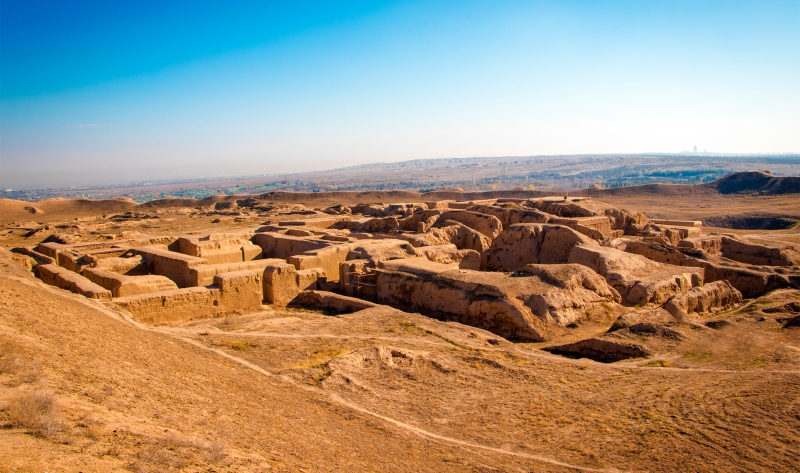
The fortress of Staraya Nisa with its powerful walls and numerous towers served as the royal residence. Photo: Eziz Charyyev/Shutterstock.com
Yangi-Kala Canyon: multicolored rocks
- Where: Balkan velayat.
- Point on the map
The name of the canyon is translated from Turkmen as “Fiery Fortress”. Its sheer walls are made of red rocks, and there are also layers of white, yellow and orange shades. Once the waves of the ancient Tethys Sea roared here, but the wind and water have done their job over the millennia, and now the fortress-like colorful rocks rise up, striking the imagination.
The color of the rocks varies depending on the lighting. The fiery canyon is especially good in the rays of the setting sun, when the sandstone seems to be burning. “Turkmen Mars” is just one of the big names well—deserved by the canyon.
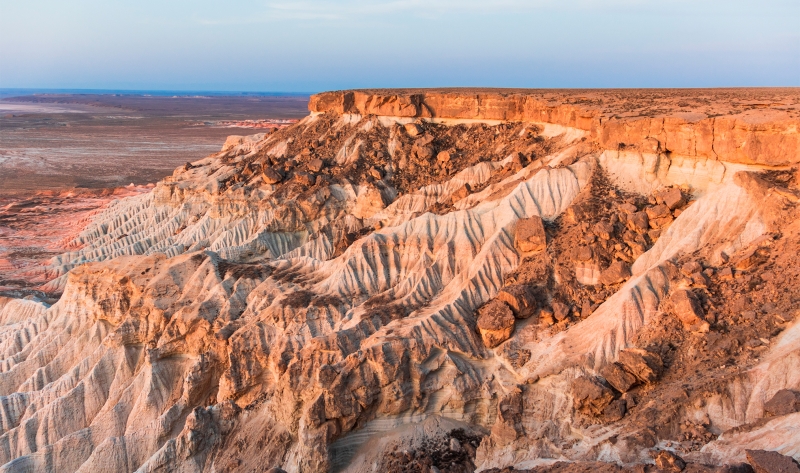
Once the waves of the ancient Tethys Sea roared here, but the wind and water have done their job over the millennia, and now the fortress-like colorful rocks rise up, striking the imagination. Photo: Eziz Charyyev/Shutterstock.com
Dayakhatyn Caravanserai: Medieval hotel
- Where: Lebap velayat.
- Point on the map
The caravanserai of the XI-XII centuries on the banks of the Amu Darya River remembers the times of the Seljuks, the Golden Horde and the Timurids, descendants of the famous commander Tamerlane. Back then, life was in full swing here: caravans came and went further, merchants bustled, rich travelers arrived. The massive structure of mud brick still impresses with its size and geometric ornament on the facades.
Dehistan: millennial Mosque
- Where: neighborhood of Balkanabad.
- Point on the map
An archaeological reserve on the territory of a former medieval town. Time has not spared the raw clay walls of the city, its gates, mosque and necropolis, but fragments can give an impression of ancient architecture. The portals of the mosque with an arch and blue graphic ornaments and the 25-meter-high minarets towering in the neighborhood are especially good.
Not far from the settlement there is a necropolis with a mausoleum-the Shir Kabir mosque, which is considered the oldest mosque in Turkmenistan. It dates back to the 10th century, and despite numerous reconstructions, the interiors have preserved authentic elements of that time, including a carved mihrab.
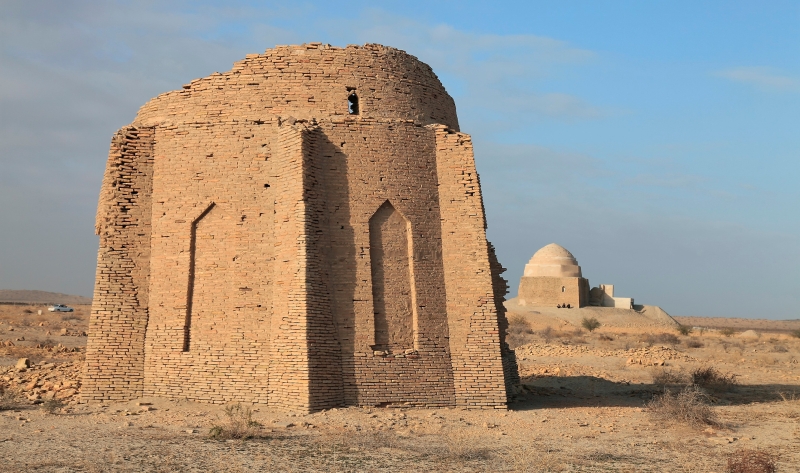
An archaeological reserve on the territory of a former medieval town. Photo: Konevi/Shutterstock.com
Kunya-Urgench: medieval capital
- Where: Dashoguz velayat.
- Point on the map
One of the oldest cities in Turkmenistan: archaeologists dated the remains of the fortress to the V-II century BC. This is the former capital of the medieval state of Khorezmshahs, which was plundered by Tamerlane’s troops in the XIV century.
Since the Middle Ages, the powerful gates of the caravanserai with colored ornaments in the arch, the Tyurabek Khanum mausoleum with magnificent dome decoration and the 60-meter Kutlug-Timur minaret, the tallest such structure in Central Asia, have survived. We boldly recommend the place to connoisseurs of Muslim architecture and collectors of UNESCO sites.
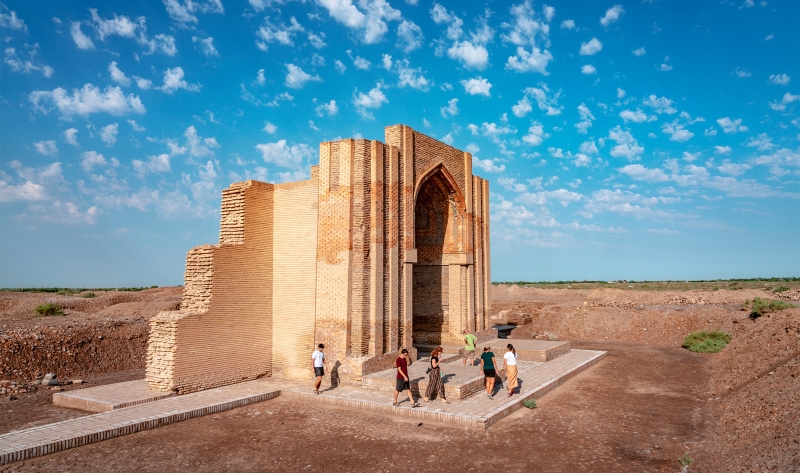
Since the Middle Ages, the powerful gates of the caravanserai with colored ornaments in the arch have survived. Photo: LMspencer/Shutterstock.com
Take a chance, and come what may: life is short, and the sands of the great desert will soon cover our tracks. See you on the Great Silk Road!
Advertising. LLC “Hotel Booking”. Erid: 2VtzqvU1LFC
Cover photo: Mohamed Hashif/unsplash.com
